
Dear reader, I strive to bring you only the highest quality of content here at nullGaming. But when I read articles published on other blogs I realize what I actually bring you is the highest of mediocre content. That’s just one example of the unflinching honesty upon which this blog is built. You see, here at nullGaming we humbly and honestly strive to bring you the mediocre content you’ve come to expect from us. We believe in the good ol’ fashioned principle of a solid work ethic … albeit a solidly low effort work ethic, but that too is a good ol’ fashioned principle dammit. I say all that to tell you the following, dear reader: this is the second time I’ve written this review, or at least the first half it. In the first version of the introduction, I talked about how trade policies in Brazil during the 1980’s led to an incredibly unique gaming scene in which Sega, not Nintendo, became the predominant gaming presence in that country during the same timeframe that the NES was conquering the world almost everywhere else. Trust me it was pretty riveting stuff!* And that was all to preface this review of Sonic Chaos, which … I erroneously cited as having been a regional Master System title, released only in Brazil and Europe (i.e. selected PAL regions). But that wasn’t true. It also released in Japan. So really what happened is that Sonic Chaos released on SMS almost everywhere else in the world but North America. And that’s because here in the U.S. of A. we’re spoiled babies obsessed with the idea of ‘new toys’. Sonic Chaos was released for the Master System in 1993, well into the era of 16-bit console dominance, so as Americans, we almost certainly didn’t have time for that old crap. “What, you want me to dig my Master System out of the garbage!? Pfft, whatevs,” said one random 15 year-old from the 1990’s we interviewed. At any rate, upon reappraisal the whole original Brazil introduction felt silly. Worse, it felt intellectually dishonest. nullGaming: humbly bringing you the type of middling content you’ve honestly come to expect from mediocre intellectuals. And that’s what you call a mission statement baby. On with the review! Version 2.0: now in beta!
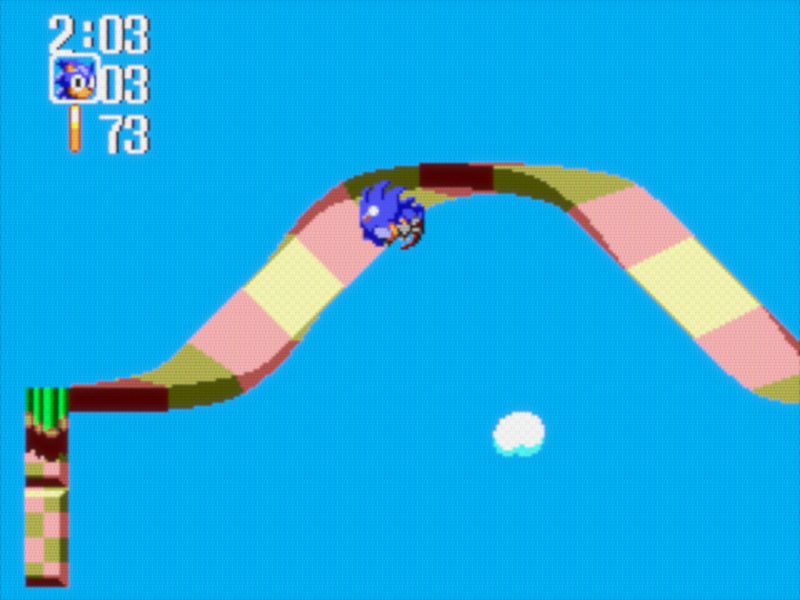
Sonic Chaos is the third Sonic game to appear on the Sega Master System, following Sonic the Hedgehog and Sonic 2. Those two games were both different enough from their 16-bit counterparts that they can’t really be considered ports, but Sonic Chaos was the first 8-bit Sonic release not explicitly named and patterned after one of the 16-bit titles. It was also my first 8-bit Sonic title, so it needs to be said that I was going in with reasonably low expectations. And I’m happy to say it exceeded my low expectations! Among other things, this is the first and only Master System title to feature Miles “Tails” Prower as a playable character (Trivia time: Miles very first appearance as a character was in the Master System version of Sonic 2, but he wasn’t playable in that one). That being said, I always use Sonic for my first playthrough of any Sonic game (I kind of just assume that everyone does). In practice that means that I only ever use Tails in cases where the game has enough replay value to warrant multiple playthroughs. So does Sonic Chaos have that kind of replay value … or did Tails get left high and dry? Let’s dig into those details!
Story elements in Sonic games from this era tend to range from “barely there” to “distant afterthought”. Sonic Chaos is really no different in this regard. In this one, Doctor Eggman has stollen one of the six Chaos Emeralds, which caused the rest to be scattered across the South Island. As a result South Island is now sinking into the sea. Obviously it’s up to Sonic and Tails to take up the mantle once more and save the South Island. But I mean really … who cares!? We’re here to Go Fast, collect rings, and blow up Eggman’s shit. In that order. Everything else is just set dressing. So having a lack of solid story elements in a Sonic game from this era is hardly a deficit. In point of fact, some might even say that the series started going down hill when it did focus increasingly on plot details. I’m sure we’ll talk about that eventually.
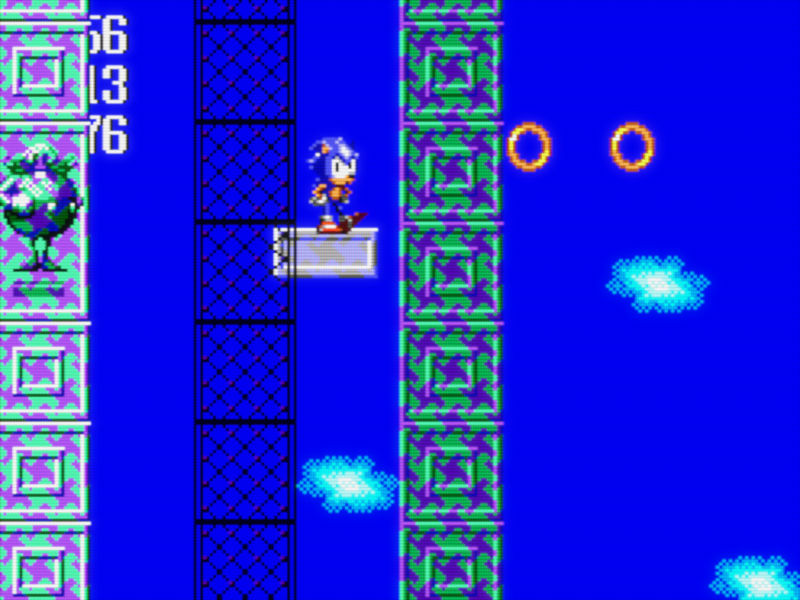
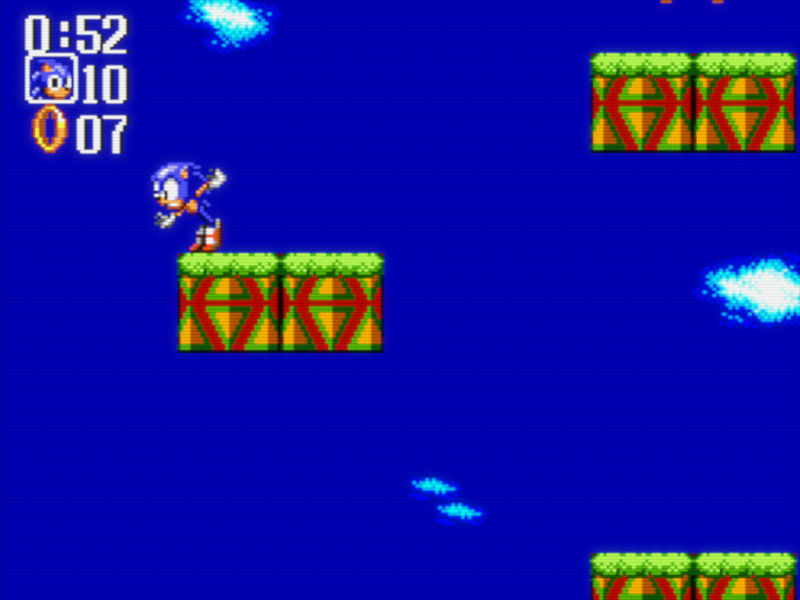
For most, I think the burning question here is whether Sonic Chaos still plays like a Sonic game. And surprisingly it does! The available move-set will feel immediately familiar to series veterans. Sonic’s trademark sense of acceleration and inertia is on tap and well implemented. Spinning and dashing maneuvers are present and accounted for in both standard and “Super” varieties. Likewise, the standard Sonic set pieces are all here: loop-de-loops, corkscrews, springs, bumpers, and destructible blocks all make appearances. This all lends a comfortable sense of familiarity to the game. So assuming you’ve played other Sonic games, there’s not going to be a lot of learning curve here, but it feels great to just jump in and play. Sonic Chaos doesn’t quite convey the same feeling of speed as its 16-bit siblings, but I think this is a case of pushing up against the processing limits of the Master System itself, more so than an any deficiency of the game.
None of this is to indicate that Sonic Chaos doesn’t have a few tricks of its own up its sleeve though. One of the new power-ups introduced here are the Rocket Shoes. When you open an item box containing Rocket Shoes, you’re able to fly around the level at high speed for a limited amount of time, until you run into an obstacle or the time limit expires. The first Special Stage of the game actually has you flying the Rocket Shoes through an entire airborne course, in an effort to collect a Chaos Emerald before the timer expires. Another new power-up seen in Sonic Chaos is the Pogo Spring. These are similar to a standard Spring Block, except turned upside down. So when you jump on a Pogo Spring, the entire block starts bouncing around, pogo style, taking you along for the ride. This allows you to jump off the block at the apex of the pogo jump in order to reach higher areas of the stage. All told, the new power-ups are well implemented and a lot of fun. They don’t completely reinvigorate the Sonic formula or anything, but they are a neat twist. Interestingly enough, while these power-ups would also appear in the final 8-bit Sonic title (i.e. Sonic the Hedgehog: Triple Trouble for Game Gear), neither of them appeared in any other series entry beyond that.
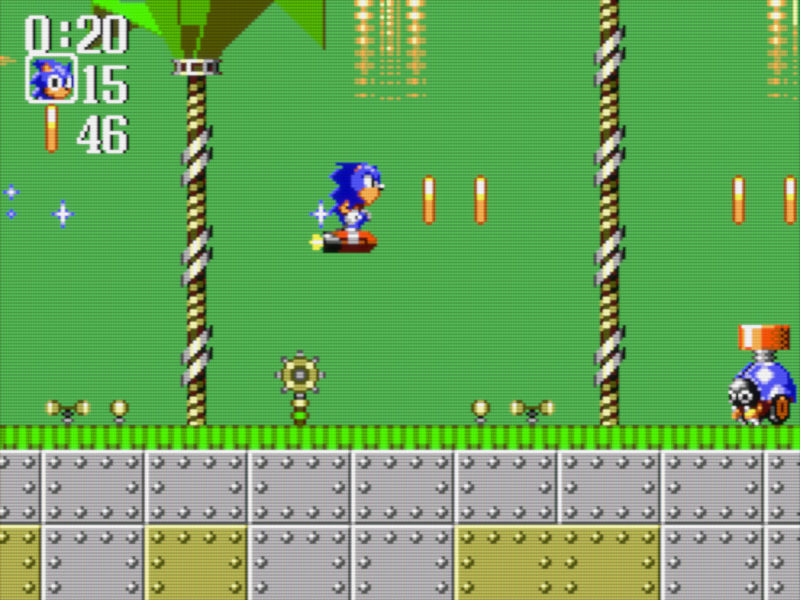
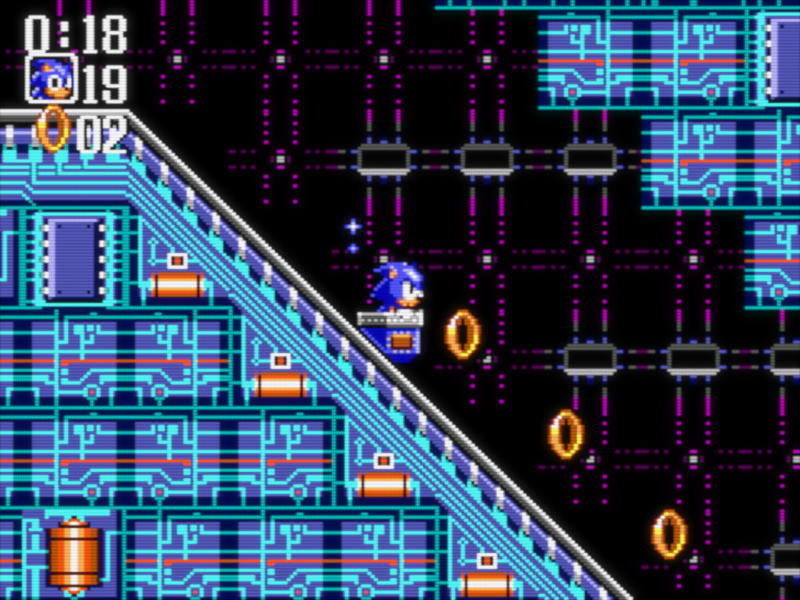
Most of the shortcomings one could level at Sonic Chaos boil down to simple limitations of the hardware itself. Sonic started life as a 16-bit series, and I would argue that even today it’s the 16-bit titles that are most fondly remembered. Porting 16-bit gameplay and features down to 8-bit architecture is naturally going to involve compromise. I mentioned the speed factor above (Gotta Go (slightly less) Fast!), but graphics and sound will likely be the first downgrades a player notices. While the game actually looks and sounds pretty great for an 8-bit title, it’s not going to compete with the fidelity of a 16-bit game (naturally). The aspect that may not become immediately apparent is the diminutive nature of the game. The levels are greatly simplified when compared against better known Sonic titles, and they’re all quite short for the most part. This in turn means that the game itself is practically over before you know it. That being said, I almost never hold short completion time against a game if the quality of gameplay is there to support it. And in the case of Sonic Chaos, I would contend that it is.
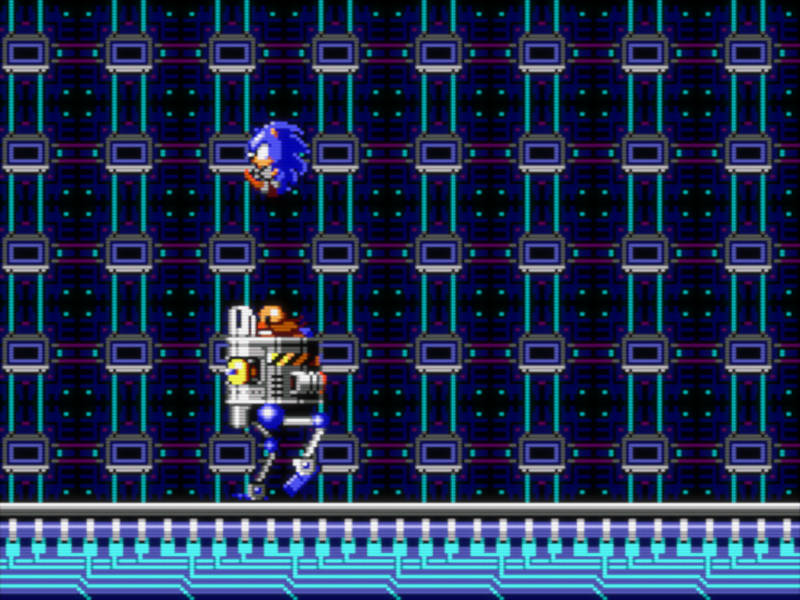
So that brings me right back around to the question of replay value. Is Sonic Chaos good enough to warrant a playthrough as Tails? Heck yeah it is! The combination of quality gameplay and short playtime practically demands it. I’d go so far as to call Sonic Chaos a hidden gem Chaos Emerald within the Sonic series, one that serves not only as a showcase of Sonic’s 8-bit viability, but as a demonstration of what the Master System was capable of in the right hands. I’m now pretty curious to check out the other 8-bit Sonic games I’ve missed to see whether they were consistently this good or whether Sonic Chaos was just an anomaly. At any rate, I can easily recommend this game to Sonic fans, Sega fans, and fans of platformers in general.
Final Verdict: 8 Sonics out of 10 Booms
Editor’s note: It absolutely was not riveting stuff, although if you’re interested, Munib Rezaie has written a fascinating and extensive article on the topic, seen here. ↩
Leave a Reply